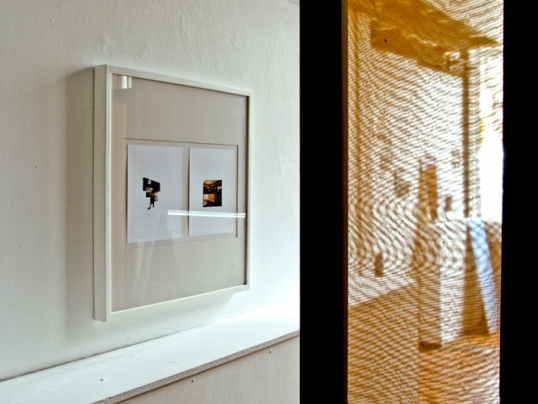





Number Five (2008-9)
Number Five (2008-09) is a sculptural installation which considers the sexuality of space and architectural form by drawing on specific examples of interior and product design. The work references the history of womens' boudoirs with specific focus given to the interior designs of Adolf Loos (1870-1933).
The way space has gained sexual connotations during this history, is compared to the design and advertising of Coco Chanel's No5 perfume bottle launched in 1921. Through this comparison -from an ornamental addition on a women's dressing table, to the interiors of Adolf Loo's raumplans and the architectural scale of a buildings facade or Parisian city plan- the work looks to highlight and link how such sexualisation of space is present in elements from our daily lives, regardless of scale or function.
The screen's shape is taken from the original 1921 bottle for Coco Chanel's perfume No5. As with the fashion designers range of clothing, her perfume bottle rejected the decorative and typically feminine floral motifs of the time, instead favoring a stronger architectural form which, it is claimed, takes it's shape from Place Vendôme at the front of the Ritz Hotel where Chanel was resident.
The bottles link to architecture can also be seen in the way it is advertised, as the starlet promoting the fragrance is often photographed behind the bottle, pictorially framing her body or face and spatially housing her in it's form. In both the history of the boudoir and Chanel's design label there is a similar scenario of events. Both were started by women with the intention of being for female emancipation and growth, however both were eventually subverted physically or conceptually into sexual spaces and incarcerating objects.
A further element to the work is the framed collage Spaces: The Boudoir in Müller House and Sitting Niche at Frederich Boskovits Apartment (2008) which is strategically scaled and placed to emanate the famous Chanel label as well as entice visitors behind the screen. The collages are taken from two of Adolf Loo's houses and are chosen as key examples of how the architect created intimate booths within his interiors, which contained and framed their users.